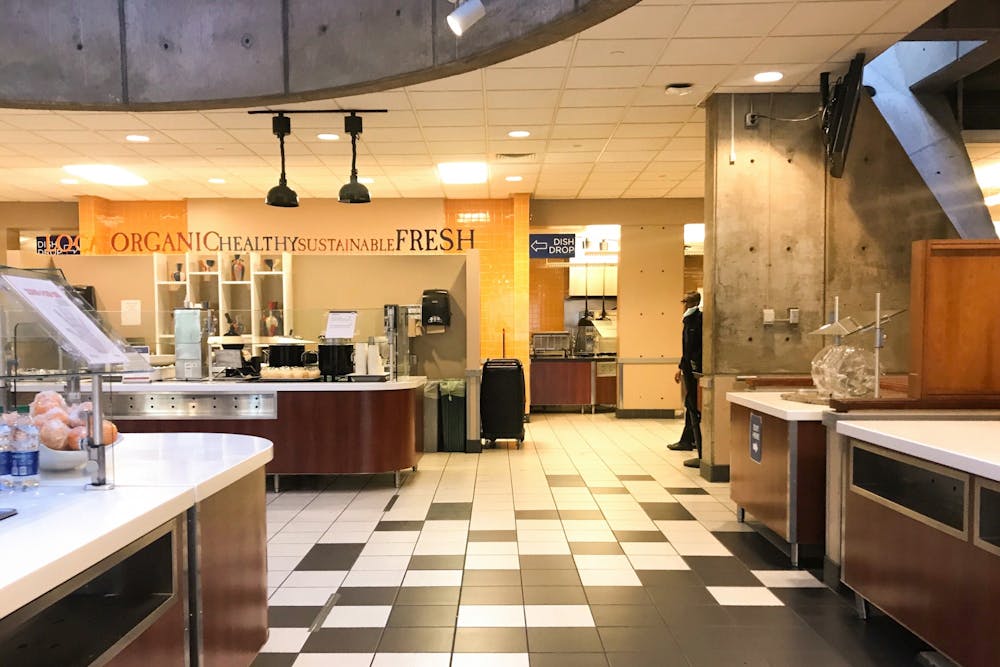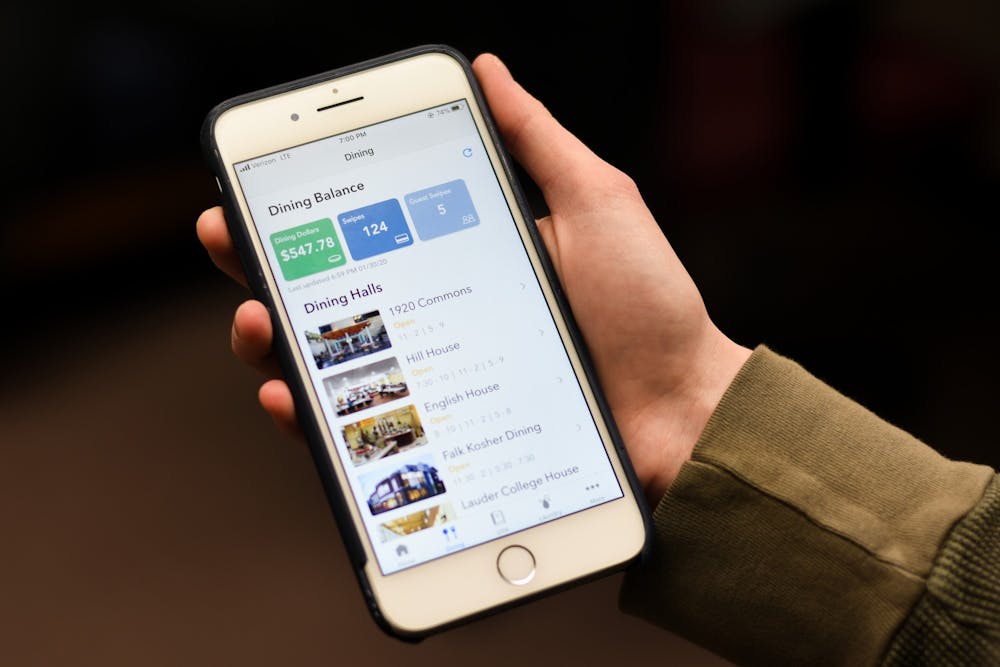
Penn dining facilities, which are preparing to open in less than three weeks, will be operating quite differently for students this year due to the University's coronavirus guidelines.
All food will be pre-portioned in takeout containers. There will be no more self-serve stations, as stations will be set up to promote physical distancing between students and Penn Dining staff. While students will not be permitted to eat inside the dining halls, they may eat outdoors in tents that will be set up in prominent locations throughout campus, such as Penn Commons, according to Director of Business Services and Hospitality Services Pam Lampitt.
Any dorm room without a kitchenette will automatically receive a microwave and fridge.
“People eat with their eyes, so it’s going to be a very different experience because your eyes are just going to see a container,” Lampitt said.
In an effort to streamline dining options, first years, who are required to be on a first-year specific meal plan, no longer have the ability to choose between three plans. Although all options cost the same amount in the past, each plan had a varying number of swipes and dining dollars.
For the upcoming academic year, only first years will have one mandatory dining plan, with a 10% decrease in price to reflect the shortened semester. The First-Year 220 plan this fall includes $150 Dining Dollars and 220 dining visits, which equals approximately 19 swipes per week, a higher number of dining swipes than offered in previous first-year meal plans.
Swipes can be used at one of Penn's five dining halls for access to an “all-you-can-eat” style meal, while dining dollars are used at the University's retail locations such as Houston Hall.
The goal of the First-Year 220 plan is to ensure students have meal options, as there will be fewer opportunities for joint meals in college houses, through club activities, and in off-campus locations, Lampitt said.
“We were very concerned about area locations and restaurants not reopening, so we wanted to make sure that there was full access for food for students,” Lampitt said.

As every meal will be a pre-packaged, grab and go option, the residential dining locations will operate using a Pick 5 program in which diners can choose one entree, three sides, and one beverage. Lampitt said this system will ensure that all students on a dining plan still have more than enough food.
Each entree will include a main meal with two predetermined sides. The entree container may have, for example, meatloaf with mashed potatoes and green beans, Lampitt said. In addition to the entree, students will be able to select three sides such as salad, fruit, and dessert, plus a beverage.
Although the entree box will be pre-portioned, Lampitt said the dining staff will be flexible to accommodate students’ needs. Those with special dietary needs will be able to contact dietitian nutritionist Dan Connolly to assist with any concerns.
“If somebody is a wrestler, and he or she is in their weight gaining stage, and they want to have another hamburger, we’re going to open up that container and we’re going to put another hamburger in,” Lampitt said.
The food options, however, may be more limited this year due to physical distancing requirements, Lampitt said. Distancing regulations require six feet between diners and between the kitchen staff themselves. Following these Centers for Disease Control and Prevention guidelines means fewer cooks will fit in the kitchen, making it harder to cook as much food at once compared to past years, Lampitt said.
Lampitt said no dining employees will lose their jobs, though they may be “redeployed” to fill new roles, such as extra cleaning.
Operating hours for residential dining have been extended to better suit the changed landscape of campus this fall as many first years, who rely most on the dining plan, will be scattered across college houses. 1920 Commons will open at 7:30am on weekdays for breakfast in order to accommodate first years who were relocated to live in the high rises, located adjacent to Commons, this fall.
McClelland Dining, located inside the Quad, will only be available for mobile order pickup as the space is too small for proper physical distancing, Lampitt said.
At retail locations, where dining dollars are accepted, students will be encouraged to use the PennEats app to order in advance and set a predetermined pick-up time. Lampitt said that although the mobile pre-order payment is preferred, Houston Market will still accept cash.
Many of the details on dining operations this fall are still in the making and all decisions are subject to change depending on guidelines released by the CDC, Pennsylvania, and Philadelphia, according to Lampitt.
Lampitt added the Penn Dining team has learned a lot from the “pilot trial run” in March, April, and May — when the dining team transformed operations almost overnight after campus operations were shut in mid-March to slow the spread of coronavirus.
“We are doing our best to follow everybody’s guidelines and those guidelines are a moving target, which is why we haven’t figured everything out,” Director of Communications and External Relations Barbara Lea-Kruger said.
The Daily Pennsylvanian is an independent, student-run newspaper. Please consider making a donation to support the coverage that shapes the University. Your generosity ensures a future of strong journalism at Penn.
Donate




